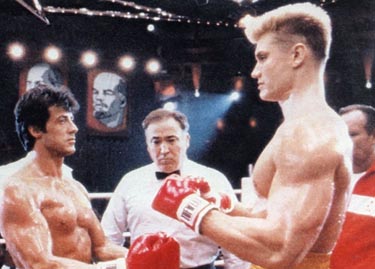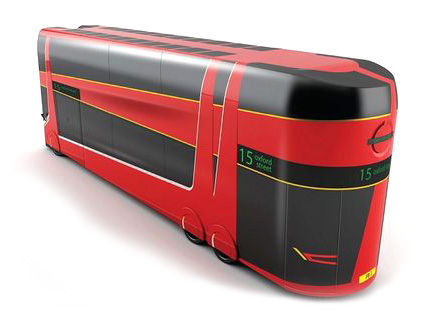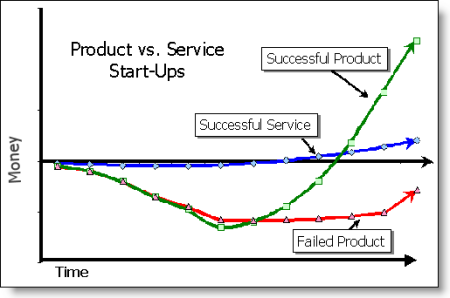It sounds like suicide picking a fight with a much larger and established competitor (niche or mainstream). How can you possibly expect to win when they’ve more resources, customers and a mature product? You can’t, easily or quickly!
 Rocky IV up against a much bigger and stronger competitor
Rocky IV up against a much bigger and stronger competitor
However there are some good reasons to be compared and associated with the market leaders:
- Customer knowledge – Customers have a clear understanding of what an existing product does. They can therefore easily pigeon hole your product into the same or similar category. “oh, your like ACME’s product”. In this way a sale is easier because less explaining is necessary.
- Free-riding education – You can ride on the competitors market education. Educating customers is very, very, very expensive and time consuming. Why not take advantage of someone else’s hard work and cash..
- Price comparison – Customers will always want a price comparison. Competition is a good thing. Its good for suppliers because it grows the overall market. It also reassures potential new customers. ‘If this supplier is no good I can always switch to another one.’
- Defecting customers – Unhappy or dissatisfied customers will need an alternative. Put yourself in that position and you will catch them. The crumbs from the competitors table maybe healthy loaves to your startup.
- Out innovate – Find the weaknesses in the competitors offering and improve it with your own. Many a market leader has been toppled by a much smaller innovative company. Startups are better at innovating than the big market leaders.
A word of warning this strategy may also get you a bloody nose. The competitor has the lions marketshare and so you have to make alot of noise to be heard. If you do get noticed by the competitor move quickly to establish a position of strength because if they attack it may be a killer blow. You may also start a price war which is ultimately no good for anyone except the customer in the short run.
Competition is a good thing. It demonstrates there is a need in the market for a product or service. Rarely is there an new opportunity without competition. If there is no competitors you have to ask yourself is there really ‘a market in this gap?’ As a small startup you have to out-compete your much larger rivals.
Battling against competitors really requires the Art of War. Strong knowledge, great tactics and an outstanding strategy is needed. Its not easy. Often startups have no choice. The odds are not on your side but that does not mean you won’t be successful. Startups are more agile than established bigger suppliers.





 Taking the Tour out of London (a conceptual London bus)
Taking the Tour out of London (a conceptual London bus)



